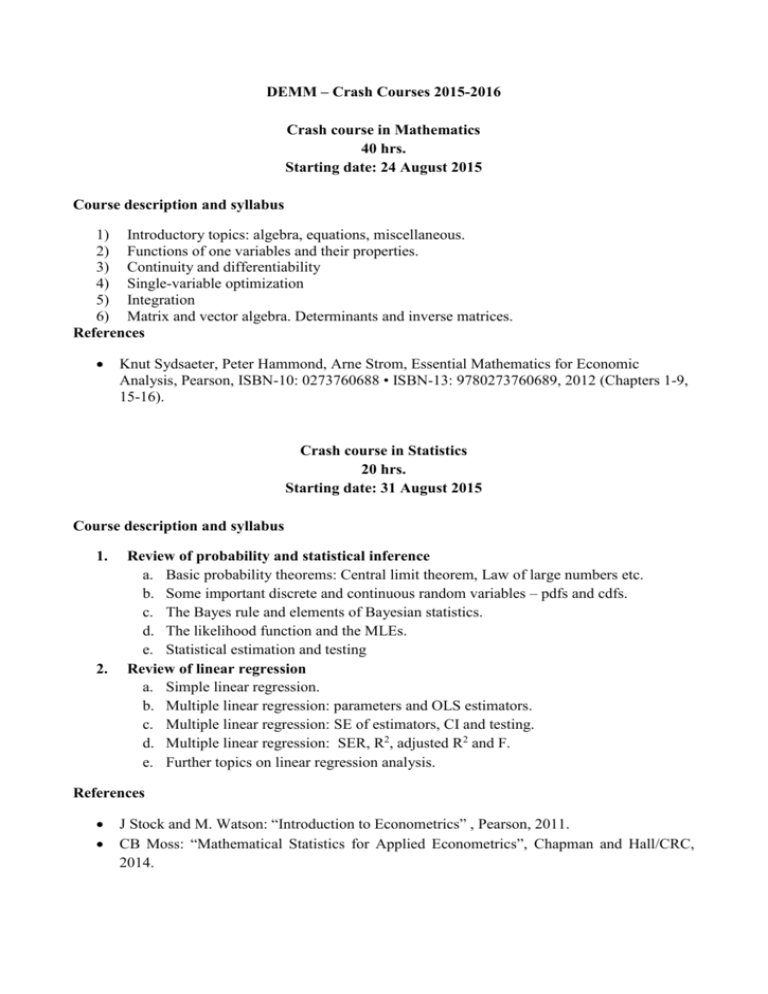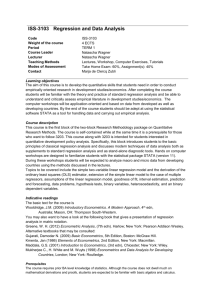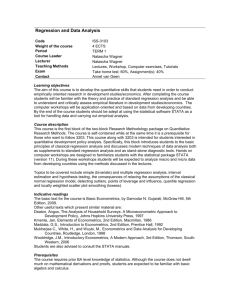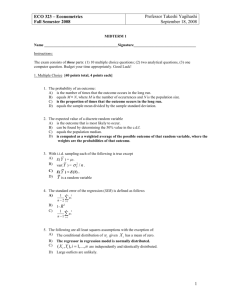Crash courses outline 2015-16
advertisement

DEMM – Crash Courses 2015-2016 Crash course in Mathematics 40 hrs. Starting date: 24 August 2015 Course description and syllabus 1) Introductory topics: algebra, equations, miscellaneous. 2) Functions of one variables and their properties. 3) Continuity and differentiability 4) Single-variable optimization 5) Integration 6) Matrix and vector algebra. Determinants and inverse matrices. References Knut Sydsaeter, Peter Hammond, Arne Strom, Essential Mathematics for Economic Analysis, Pearson, ISBN-10: 0273760688 • ISBN-13: 9780273760689, 2012 (Chapters 1-9, 15-16). Crash course in Statistics 20 hrs. Starting date: 31 August 2015 Course description and syllabus 1. 2. Review of probability and statistical inference a. Basic probability theorems: Central limit theorem, Law of large numbers etc. b. Some important discrete and continuous random variables – pdfs and cdfs. c. The Bayes rule and elements of Bayesian statistics. d. The likelihood function and the MLEs. e. Statistical estimation and testing Review of linear regression a. Simple linear regression. b. Multiple linear regression: parameters and OLS estimators. c. Multiple linear regression: SE of estimators, CI and testing. d. Multiple linear regression: SER, R2, adjusted R2 and F. e. Further topics on linear regression analysis. References J Stock and M. Watson: “Introduction to Econometrics” , Pearson, 2011. CB Moss: “Mathematical Statistics for Applied Econometrics”, Chapman and Hall/CRC, 2014. Crash course in Microeconomics 40 hrs. Starting date: 31 August 2015 Course description and syllabus This course focuses on the following topics: basic theory of consumer behaviour; production and costs; decisions under uncertainty; partial equilibrium analysis: perfect competition, monopoly and oligopoly. The exam consists of a written paper, with theoretical questions as well as exercises. 1) Introduction. Market structure. 2) Consumer theory. Budget constraint, preferences, utility function, optimal choice, demand function, price effects, consumer surplus, uncertainty. 3) Market analysis. Aggregate demand, market equilibrium. 4) Production theory. Technology, profit maximization and cost minimization, cost functions and firm supply. 5) Market structure. Aggregate supply and perfect competition, monopoly, price discrimination, oligopoly. References Hal Varian, “Intermediate Microeconomics - a modern approach”, W. W. Norton & Company, 2009











